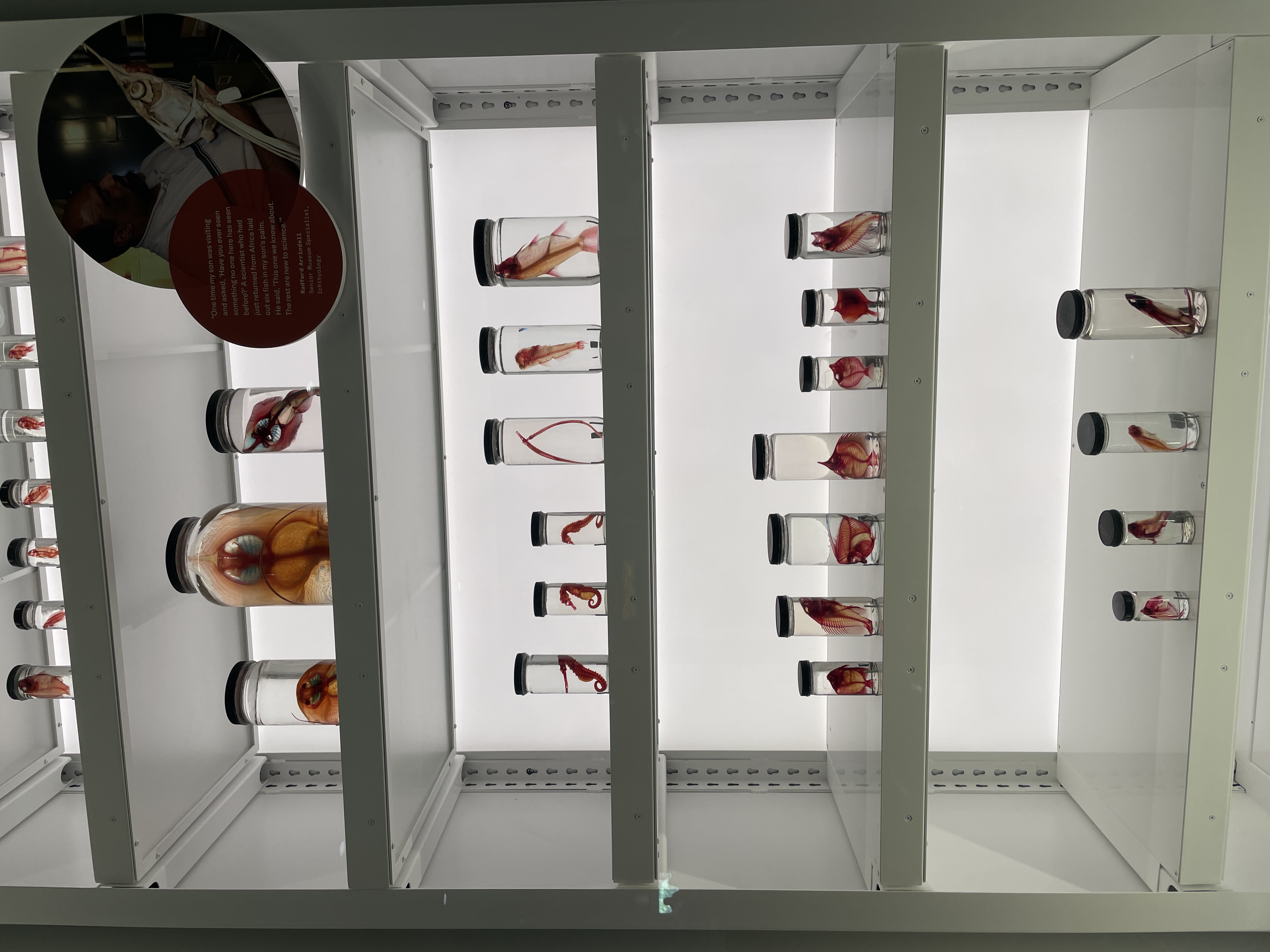Event name: NYC Field Trip to American Museum of Natural History
Event time and place: November 16, 2024 in New York City, New York
On the trip to the American Museum of Natural History in New York City, I was required to take notes and learn about the history of different fossils, how these fossils on display were organized, and the principles behind their history. We began in the Hall of Vertebrate Origins where we followed the 500-million-year journey of backboned animals from water onto land and into the air. The primary organizing principle of this fossil based hall is to present itself in a chronological presentation and cladogram to showcase the relationships of life evolving and how different organisms had to adapt to the changing environment around them. A great example of this that Dr. Merck explained to us that what I found interesting was the evolution of the Acanthostega. It is one of the earliest and most primitive limbed vertebrates. It is special because it had eight fingers and seven toes which likely was the result of a genetic accident from a switch in the domains of the natural world. While it had these limbs, it wouldn’t have been able to be a land walker as its hips and shoulders could not support its weight. Along the way we also learned of the history between jawless and jawed vertebrae as well as how vertebrates were able to finally breathe outside the water. I found it interesting that the evolution of the air breathing shelled egg, which ultimately allowed vertebrates to withstand out of water environments, started with the amniotes. Throughout this exhibit the two things that were most outdated was the cladogram on the floor as well as the turtle exhibit. As the cladogram on the floor of the exhibit was introduced in 1995, it is definitely in a state where it could be replaced to reflect a more recent depiction of species relationships. As it pertains to the turtle exhibit, the position of where they are placed in the hall is wrong. They should be near the archosaurs as molecular systems state that they are the closest relatives to turtles. The challenges that changing the format of the exhibit could cause would be the process of simply rearranging the pieces and making sure the artifacts are highly protected.

A picture of the ancestors of turtles

A picture of the clear and stained fish
For the self guided tour, I explored the Hall of North American Mammals. The was not only organized based on the mammals that roam North America, but on the continent itself. Throughout the hall, it was encompassed in many dioramas that depicted a lifelike scene of a species somewhere on the continent. The biome in which the species lives on throughout the continent is also a way the hall was laid out and organized. There was one of grizzly bears in the grasslands with snow capped mountains in the background, one of Alaskan Moose fighting one another with their antlers, and one of lifesize bison roaming the plains and grasslands. For each diorama, underneath the name of the life sized mammals, states who it was gifted from as they were all donated to the museum from someone or somewhere. I thought this exhibit was truly well done and all the information provided was really helpful in understanding which parts of the continent the species really thrive in.

A picture of the Alaskan Moose
The last thing on our agenda that we did was see a planetarium show called Worlds Beyond Earth. The theme revolved around the intricate worlds that share our solar system as well as the unique conditions that make life on Earth possible. Most of the scenes did seem to be based on measurements and precise research as we see some images taken from NASA but other times it did feel as if they were images/graphics made up in a design studio. That is understandable as the universe and even our solar system is such a huge expanse of things that we are nowhere close to discovering because of how far it is. Making an educated guess as to how these worlds and celestial objects react is fairly common I believe. A piece of information that I did not know and found interesting was how Io, Jupiter's third largest moon, is the most volcanically active object in the solar system despite being enveloped in ice.
It is important for a museum as a whole to accommodate all visitors so that they can have an equally enjoyable time. I believe the American Museum of Natural History does a great job in reaching all age ranges, interests, and varying abilities. For little kids there were many interactive things they could touch and play with like for example in the Insectarium, they could play touch screen games and see insects. Each exhibit has something new and completely different from the other, so I believe it fits a wide range of interests amongst people. For the varying abilities I noticed they had wheelchair accessible entrances, elevators to all floors, assistive technology like hearing loops, brail for those with visual impairments, and more. When it comes to non English speaking people coming to visit the museum, they accommodate them by offering translated museum maps and information in multiple languages as well as providing guided tours in various languages when requested.


